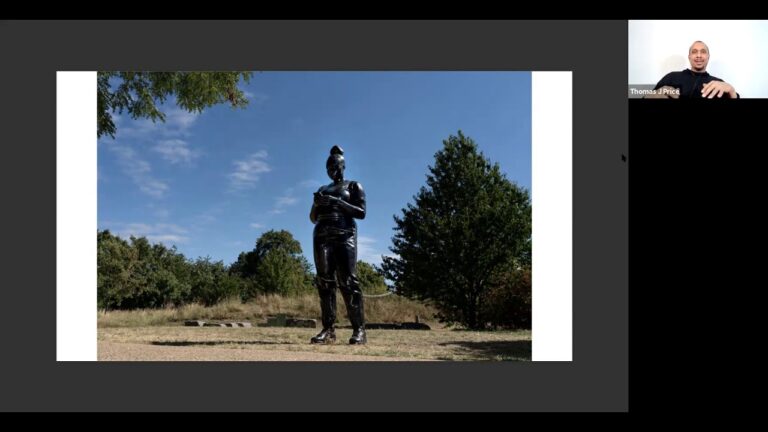
New Models is a lecture series that invites practitioners from different disciplines to discuss how their work can change the models around which society is organised. These conversations will address how we can shift power structures, socio-economic forces and structural inequalities present in society today to give us new tools to rethink the world around us.
When the statue of 17th century slave-trader Edward Colston was toppled off its plinth into the Bristol harbour as part of the Black Lives Matter protests earlier this year, it was a historic moment. Yet, as people hailed this as a moment of systemic change, artist Thomas J. Price wrote in Time magazine, “For me, it’s not a zero-sum game… If we cannot see the irony in taking down a statue of a slave owner, and replacing it with work by an artist whose ancestors have benefitted from slavery, that’s an indication of even wider issues.” His words proved to be prophetic since just over a month after Colston’s statue was removed, a new statue by Marc Quinn suddenly appeared on the vacant plinth; memorialising this moment with the figure of protestor Jen Reid with her arm raised in a Black Power salute. But as statues topple, and power hopefully begins to shift, we should pause to think about who gets to author these new works, as well as what we gain by replacing one statue for another. How can we move beyond recognising individual achievements to instead empower new and multiple voices through our public art?
In this conversation with cultural historian Michael Prokopow, artist Thomas J. Price will discuss his career to date and his focus on figurative sculptures that celebrate the ‘anonymous’ figure. These figures, portrayed larger than life, represent those who are often forgotten yet at the same time they embody those whom most can identify with. They celebrate the everyday citizen. Price advocates for a new model where art can provoke a conversation and a community rather than focussing on individuals. His work also highlights the lack of representation of black figures in public art, and the importance of having art that celebrates who we are, as a society, today.
Thomas J Price is an artist based in London. His work across media, encompassing sculpture, film and photography, is engaged with issues of representation and perception, in society and in art. Since 2005, Price has been making figurative sculptures. These sculptures function as psychological portraits of his imagined subjects – usually male, usually black – whose features are in fact an amalgamation of sources: observed individuals, ‘types’ represented in the media, and ancient, classical and neo-classical sculptures. Across these works, Price plays with methods of presentation, material, scale, and detail in order to challenge viewers’ expectations and assumptions. His work has been exhibited across the U.K. and Canada, with forthcoming installations in London, Montreal, Milwaukee and New York. He was also recently commissioned to create one of the first permanent public sculptures to honour the Windrush generation outside Hackney Town Hall, and this year his first individual full figure representation of a woman, Reaching Out was installed as part of London’s public art walk The Line as one of very few public sculptures of a black woman in the UK.
Michael Prokopow is an historian and curator. His areas of expertise include material culture, design and architecture, cultural theory and curatorial practice. He has published widely on aesthetics, craft, and modernism. In 2016 he published a study of a landmark house designed by Canadian architect Arthur Erickson for Vancouver artists Gordon and Marion Smith and he co-curated the critically acclaimed, traveling exhibition “True Nordic: How Scandinavia influenced design in Canada.” He is currently working on a book on the British artist Hurvin Anderson and a study of contemporary residential architecture in British Columbia. He divides his time between London and Toronto where he is a faculty member at OCAD University. He holds a Ph.D. from Harvard University.
source